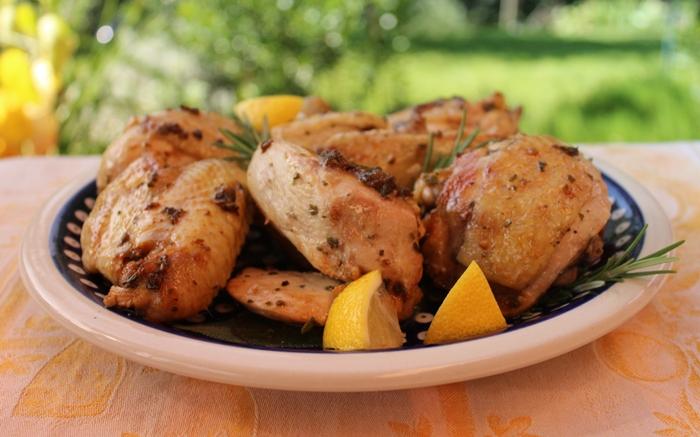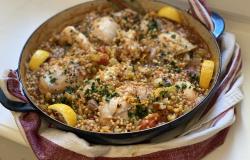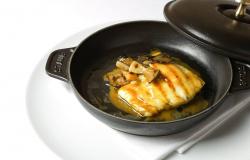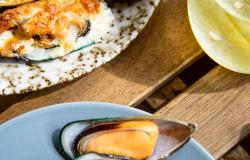Pollo al Mattone

by Amy Gulick, The Bittersweet Gourmet
Some family recipes come to be cherished not only for their flavor, but for their almost magical ability to evoke at once nostalgia and anticipation. Given the right sensory trigger - a sound, an aroma - each of us has known that peculiar feeling of being transported to another time by the promise and simultaneous remembrance of a particular food. In my Italian family, nothing would prompt a spirited response to food from my husband so much as seeing a hefty grey brick resting atop the stove when we entered his mother’s kitchen, the sight of which meant one thing - pollo al mattone. Over many years’ worth of delightful meals with my adoptive family, I, too, grew to love and long for this dish, to thrill like a child at the sight of that brick-laden pan, its contents sizzling fragrantly away while my Italian mom’s dainty, deft hands managed the myriad aspects of preparing Sunday lunch. Like much of what once belonged to her, the recipe, along with its attendant mattone, have recently become family heirlooms of a sort. And I, the fortunate recipient of this most bittersweet legacy, have for the first time attempted the recipe in my own kitchen.
In some versions of pollo al mattone, a split chicken is rubbed down with herbs and grilled under a large brick. In others, chicken pieces are browned in a pan and then seasoned, covered, weighed down, and transferred to the oven. The version below is the one my mother-in-law followed, using only the stovetop method. While with grilling you get a perfect, uniformly crispy chicken, pan cooking returns a super moist, tender chicken with - the prize - a savory jus, as the weight of the brick slowly expresses the meat’s liquids, which blend with the fresh herbs to form a delicious sauce.
You will need a pan large enough to accommodate the chicken pieces without too much overlap, a sheet of aluminum foil, and a brick. You can also use a stone as long as it has a somewhat flat side. Alternatively, you can use a heavy cast iron casserole instead of a brick (still use the sheet of foil as a separator). If it’s your first time using a mattone in the kitchen, consider boiling the brick for a few minutes, for obvious hygienic reasons, then store in a clean place for future use.
Finely chop the garlic, herbs, and juniper berries together and set aside. Juice the lemon. Have the broth warmed and ready.
Melt the butter with the olive oil over medium-low heat. Add the chicken pieces and brown them for a few minutes on each side. Then turn the chicken again and sprinkle the herb blend evenly over the pieces. Add the wine, cover with foil, and place the 'mattone' (brick) on top. When the wine is about half evaporated, remove the brick, turn the pieces, cover again and weigh down.
Move the brick around a bit as you proceed to make sure all pieces are under the weight for equal time. When the wine is almost fully evaporated, turn the pieces again and add the warm broth. Cover again, weigh down, and cook until ready. Once the chicken is cooked, salt and pepper to taste.
To note: keep the heat on medium-low for the duration of the cooking. The entire cooking time should be circa 30 minutes. As you proceed, the herbs and fats will combine and brown, and will start to stick to the edge of the pan; scrape these browned chunks from the pan’s edge, ideally with a soft silicon spatula, to incorporate them into the juice rather than letting them burn on the edges.
The final step is to cover the cooked chicken with the fresh lemon juice and gently combine. Serve with good bread for dipping into the sauce.
For more recipes check out Amy's blog and do not miss her interview on our Blog of the Week series.




